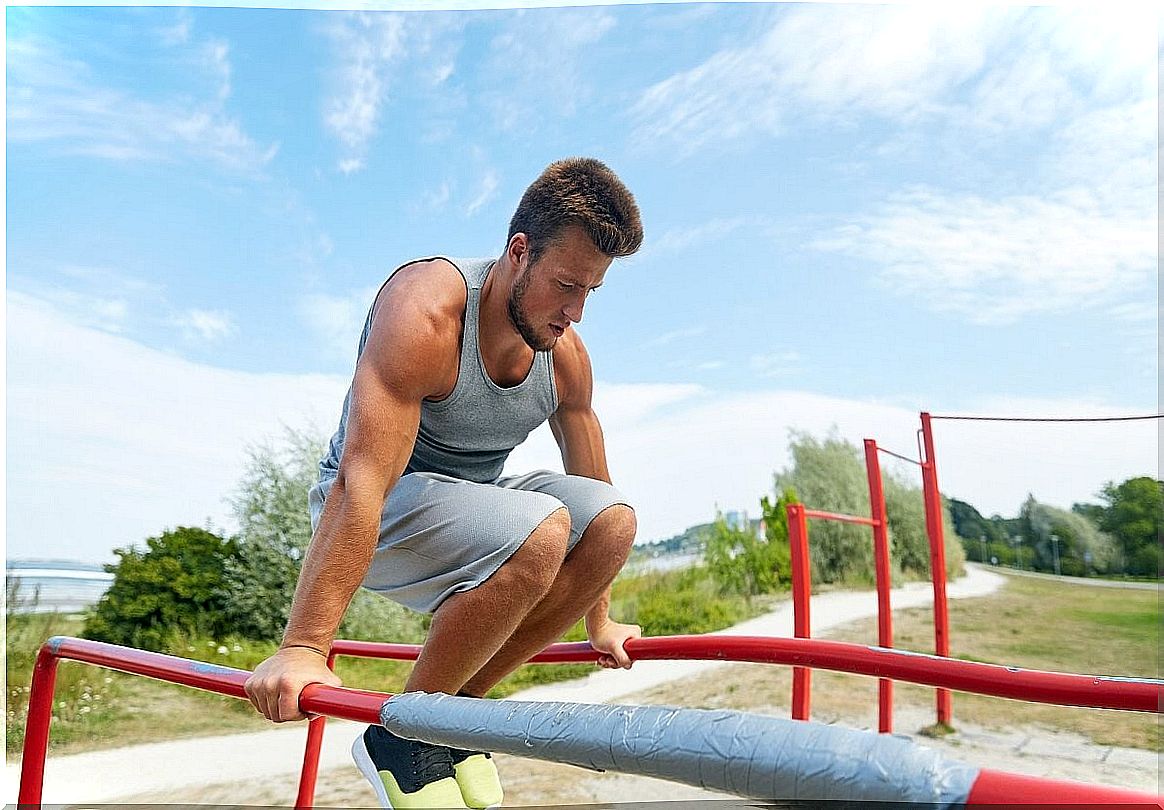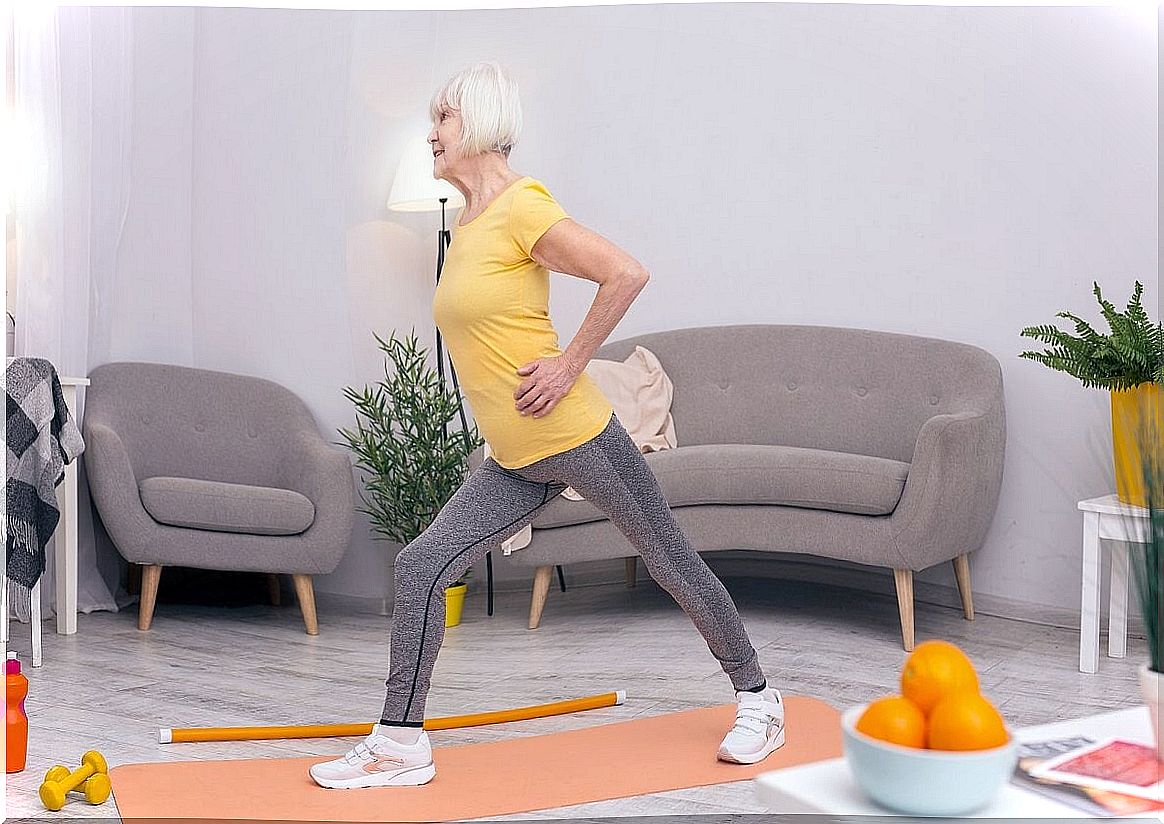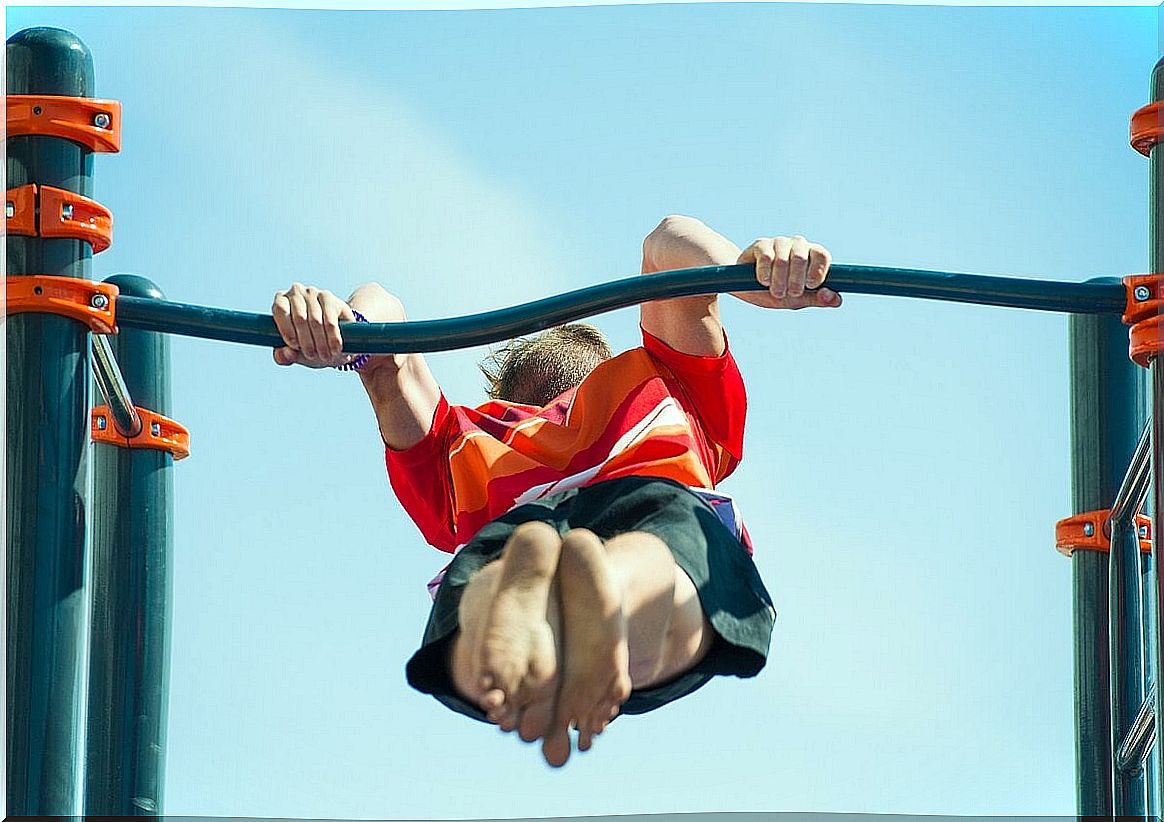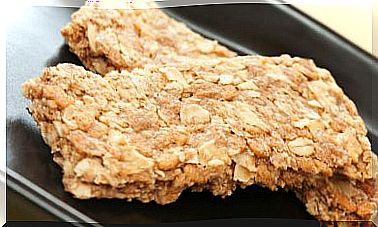Routines And Calisthenics Exercises
In calisthenics exercises you work with your own body weight. Their main advantage is that they can be practiced at any age, from a beginner to advanced level. Do you want to know more about it?

Calisthenics exercises have been practiced since ancient times. The Greeks, fathers of Olympism, are considered the forerunners of this modality, in which you work with your own body weight.
The word derives from the words kalos ‘beauty’ and sthenos ‘strength’. And while their practice helps shape the body, aesthetics is not the only reason to do them. In this article we present its advantages, as well as various routines that you can practice at home.
Why practice calisthenics?
Like all physical exercise, calisthenics brings health benefits to the mind and body. In addition, it has a very interesting advantage: it is suitable for all people, without age or physical condition limits. It can even be done in the presence of ailments, such as a herniated disc.
On the other hand, calisthenics exercises are considered ideal to improve the quality of life in many aspects, since they increase cardiovascular capacity and contribute to the loss of body fat. In turn, they favor the release of substances such as serotonin and endorphins, which are responsible for producing a feeling of well-being.
Among other things, it should be noted that it is not necessary to have special equipment or go to the gym. Many of the routines can be done at home or in green areas like parks.

Body benefit
The benefits of calisthenic exercises depend largely on the physical condition of each person. However, in general, it has important effects on the musculoskeletal system. We detail them below.
- They have a favorable effect on body posture.
- They help strengthen the joints and reduce the risk of injury.
- Calisthenics exercises are great for everyone who plays sports. The motor action performed can be transferred to movements in any discipline. Therefore, they influence sports performance for good.
- They increase control of strength, as well as endurance, agility, elasticity, muscle tone, and definition in the arms, legs, and abdomen.
Basic calisthenics exercises
The basic calisthenics exercises are ideal for those who are about to start practicing this discipline. As their name implies, they are a starting point. The most common are the following:
- Chest or elbow push-ups , also called push-ups or ” push-ups .” They can be done in various positions.
- Chins or bars ( pull up’s ). In this exercise, the person clings to a crossbar and rises from the floor, with the strength of his arms. It also varies depending on the grip and opening.
- Squat ( squats ). It consists of lowering the trunk, flexing the legs, as if you wanted to sit down.
- ABS. The least forced are done lying down, with the knees bent, separating the shoulder blades a little from the floor.
- Leg raises. To work the tone of the muscles in the lower extremities. There are several types, such as the earwig, the bicycle, on the side (separating the legs as in a “V”).
Static calisthenics exercises
Static calisthenics exercises are those in which the person remains in one position, without moving, for a certain time. They have a certain resemblance to what gymnasts do on rings or bars. In turn, they can be complicated and require a lot of strength and control. Of course, they are very showy. The most popular are the following:
- Full iron . It is done on the floor or on a parallel bar. The weight is supported on the hands and the legs are extended, so that the body is in a straight line, as if it were a board.
- Flag. It consists of holding on to a vertical bar or the tubes of a ladder and standing in a straight position, parallel to the floor, like a waving flag. It requires a lot of strength and grip.
- Front lever. In this exercise, the person hangs from a bar and also tries to stay in a straight line, facing the sky.
- Back lever. It is the opposite of the previous one; the person is facing the floor, but the grip of the bar is made behind the back.
Dynamic exercises
As its name implies, and unlike the previous ones, they imply movement. But they don’t just require strength, but dexterity and a lot of coordination. One little mistake, and the fall could lead to injury.
These are also similar to those of the Olympic gymnasts, especially those that are done on the rings, parallel bars and asymmetric bars. In addition to strength and control, they develop great agility as well as good reflexes. Let’s see some examples below:
- Muscle up. The person hangs from a bar in a supine grip. Then, try to get up, raising your torso above the bar, until it is at waist level. It can also be done on rings.
- 180 ° or 360 ° rolling. It is done hanging on a bar, as if you were going to do a pull up . However, instead of rising, the person moves the body back and forth, gaining momentum, until the feet are pointed at the sky. Then return to the starting position.

Calisthenics exercises for beginners and advanced
It is important to note that the same exercise, depending on how it is done, can be for beginners or for advanced users. For example, in push-ups or push-ups, if you work with your knees supported, less force is required than in the standard form.
In the case of the pull up , if it is done with a prone grip and the arms closed, in line with the shoulders, it requires less effort. In this, you also have the alternative of not rising completely, but until the head reaches the height of the bar.
Generally speaking, the basic calisthenics exercises are the simplest; therefore, they are recommended for beginners. In the same way, those that we describe in the categories of static and dynamic are for athletes who are more advanced.
It is appropriate to remember that advanced exercises are complex. They require muscular strength, coordination, and mastery of technique. If you are not prepared and do not have a good foundation, do not try to do them.
Ideal calisthenics routines
Calisthenics routines are those in which exercises are combined for each area of the body. That is, torso in conjunction with shoulders and arms; abdomen and legs, etc. On the other hand, it is convenient to consider the number of times an exercise is done, so that there are at least 10 repetitions for three series.
The workload can be progressively increased. However, even in advanced athletes, it should not exceed twenty repetitions so as not to overload the muscle.
As for the duration of the routine, the average for a person who starts is 30 minutes. Then, at an advanced level, you can work for periods of 45 or 50 minutes. This includes the payback periods between each series.
Warming up and stretching is important
It is convenient to remember that, for any sport, it is essential to warm up and stretch before starting to do hard work. It is something that should not be overlooked, as it reduces the risk of injury.
Likewise, the breaks between one series and another cannot be too short or too long. If they are too short, contractures may occur; In addition, if they are extended, the body cools down and there is also a risk of injury. Keep that in mind!









